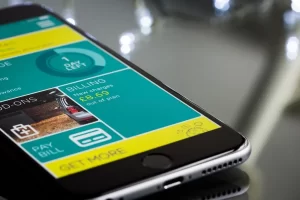Table of Contents
What are customer expectations ?
By definition, customer expectations are your customers’ ideas of how every interaction with your business should go. This is true for any part of the customer journey, from wait times to channels they can use. Customers want (and expect!) the best, and if you don’t give it to them, they’re happy to look elsewhere.
According to our Trends Report, half of your customers say they are unlikely to return after just one bad experience. This means that you may only have one chance to impress them. But after a year of unprecedented change, their behavior and expectations are likely to be very different.
What are examples of customer expectations ?
Customers expect a great deal from the businesses they are doing business with. Here are some examples of what matters to them:
- Quick and easy resolutions of customer complaints
- Access to preferred service channels
- Possibilities to answer questions themselves via the help centers
- Personalized experience
- Data Protection and Privacy
Three main types of customer expectations
- Customers expect smooth online transactions.
- Customers want corporations to guide with their values
- Customers expect businesses to meet them wherever they are
1. Customers expect seamless online transactions, and the bar is set high
As everything shifted online, small businesses and non-digital natives suddenly faced a very high bar set by digital-savvy leaders driving customer demands and engagement online. And from product availability to ease of purchase and speed of shipment, meeting those expectations is no small feat. Half gave Amazon top marks for customer service.
2. Customers expect firms to lead with their values
It is not enough for companies to provide fast and friendly customer support. In a world marked by uncertainty, customers seek empathy and buy from companies that reflect their values. According to our recent survey:
- 49% seek more empathy from customer service agents
- 54% want to buy from companies that prioritize diversity, equity, and inclusion in their communities and workplaces
- 63% want to buy from socially responsible companies
3. Customers expect businesses to meet them wherever they are
As the world changed around them, customers changed with it. 64% of customers say they have tried a new channel like live chat to engage with customer support teams during the pandemic, and 75% plan to continue using it. Simply put, customers want more options when they need to contact them. And many now prefer to use the same communication channels they use to communicate with family and friends.
Over the past year, the use of messaging apps such as WhatsApp and Facebook Messenger has exploded. Social messaging alone saw a 110% increase in popularity compared to 2020, closely followed by a 75% increase for texting. This means customers can move on to what works for them without repeating themselves.
How do customers form their expectations?
When are expectations formed? The truth is, it happens at all times and all stages of the customer journey – sometimes even before customers have purchased something. Here are some of the most common ways customers form their expectations:
Check out a competitor's service first.
If your direct competitor provides a better customer service experience, the customer will expect you to match or exceed that experience. As a result, 81% of companies view customer experience as a competitive advantage.
If you fail to solve this problem, the customer will look favorably on your competitor because they will be the best overall experience provider in their mind.
They have experienced your helpdesk in the past.
It’s the same sad story: a customer has a problem and is passed from one service to another, waiting endlessly on the phone. By the time they get to the right person, they are frustrated. It turns out they “did the wrong number,” and now they’ve found themselves in another call queue…
Customers tell an average of nine people about a positive brand experience versus 16 people about a negative experience. If your client has an emotionally damaging experience when they need help, that experience will continue with them. The next time they want to use you, they will remember the experience and think twice. On the other hand
Conclusion
They heard the terrible news about you online or on review sites. As the saying goes, bad news travels fast. Customers will consider how your business handles complaints or reviews in advance – 93% of consumers say online reviews impact their buying decisions.
Make sure your reviews help them form optimistic assumptions about what they can expect when interacting with you.





